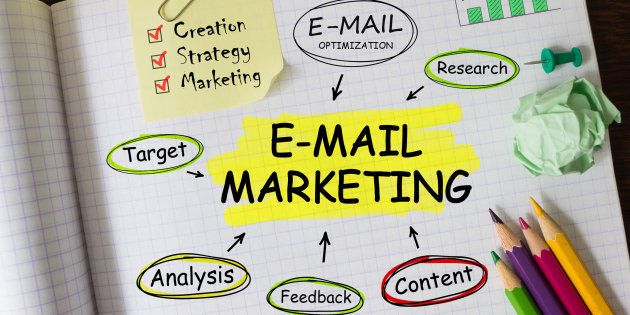
As customers ourselves, we all know what it feels like to be bombarded with irrelevant emails on a daily basis. And in a world of information overload, the emails that actually are helpful so often find themselves lost among the junk, never to see the light of day.
But from a marketer's point of view, this is troubling. We're aware that email marketing has been proven to generate leads, strengthen customer bases and build long-term brand loyalty. In addition, customers spend up to 138 percent more if they are purchasing a product marketed through email. But email campaigns aren't worth a cent if you can't get your audience to open them.
Thankfully, summer is upon us here in the southern hemisphere, and with the sunshine comes the chance to clean out our digital closets, renew our approach to email marketing, and finally cut through the clutter.
Here are three data-driven tips for high click-through rates, captivating emails, and a boost in conversions.
1. Open Rates
When your email arrives in someone's inbox, there are a few things they will notice immediately, and the old idiom "you only get one chance to make a first impression" couldn't be more relevant. To ensure your first impression gets you that click-through, here, in order of importance, are the top factors you need to consider:
Subject Line: Length and Context
Which of these stats scare you more? 69 percent of email recipients report email as spam based solely on the subject line, or 21 percent of recipients report email as spam, even when they know it isn't.
The subject line is the very first impression that people notice about a new arrival in their inbox. It might seem like the smallest and most insignificant part of the email campaign process, but it makes the difference between that email being opened and read, or deleted as spam.
When it comes to length, email subject lines perform better when longer if the reader is on a laptop or desktop, and better when kept shorter for mobile users. This will rely on some market research, to find out who your audience is. To standardise, Gmail on an iPhone shows 33 characters in portrait mode and 66 characters in landscape mode. When users are on Gmail on a desktop, they can see up to 88 characters in their subject line.
The bottom line: when it comes to subject line content, put the important part in the beginning.
A/B test two different lengths. Try testing a short and long version to see which performs better. When deciding on content, test subject lines with and without numbers. Often, in the beginning of a subject line is enough to attain a reader's attention. Most email service providers allow you to A/B test two different subject lines to see how they perform.
Sender
The sender name can also make or break an impression. The name is also visible before an email is opened, and it is too often overlooked by senders. If the email is marked as 'Do Not Reply', it's likely unimportant, if not spam, so there's a high chance of it being deleted. A company's name is marginally better, but your own name wins every time.
Even if you're sending emails en masse, try to use your full name as the sender. Personalisation increases your email's chance of being opened by 26 percent. Everyone thinks this means having the recipient's name in the header –– "Dear Tom/Jerry", which does help –– but many forget to put their own name as the sender –– "from Peter Pan".
Preheader Text
The preheader text is the text of an email that is visible as it sits in the inbox.
In "How To Win Friends And Influence People" Dale Carnegie references the data that proves that responses to letters containing bad news are always better if they start with good news.
In the same way, starting your email with good news ("We're having a sale!"/"You're invited to –") is always the way to go, regardless of what follows. There's a better chance of the reader remembering it and associating your company with positivity.
When you're designing the layout and creating content for your email campaign, the name of the game is simplicity. As long as you are as clear and concise as possible in your content and presentation, you're already halfway there to increasing conversions.
Layout
As a starting point, using square images with short, square boxes of text works well -- similar to the Instagram profile grid. Data shows that an inverted pyramid layout works to successfully draw the eye to the prize: the Call To Action (CTA) button.
Design for Thumbs
Put a concerted effort into your CTAs. After all, this is how to measure your email conversions. Make sure your CTA is eye-catching –– it's not so much the colours you use, but how much it stands out. When it comes to size, remember to design for thumbs –– make sure the button can be easily clicked, without having to zoom in or accidentally clicking on something else.
3. Measure Your Impact
Going through all the effort of creating the perfect email campaign is worthless if you aren't measuring your impact. Worse, if you're measuring the wrong metrics, you could be losing money instead of converting. There are platforms that allow you to track whether your emails are received, read, forwarded or deleted, enabling you to understand prospects, intelligently engage with customers, and know what you still need to work on.
Of course, most important of all is that your content be relevant to your audience. For more tailored and personalised emails, invest in social media monitoring tools and learn how the world's most advanced social listening systems can put the spring back in your brand's step.
